-
RBG (Julie Cohen, Betsy West 2018)
JULIE COHEN, BETSY WEST: RBG (2018)

RUTH BADER GINSBURG IN RBG
Dynamo
[CAPSULE REVIEW]
While you're waiting to see this film you can watch the hour-long interview with RBG by Nina Totenberg at Sundance in January: click.
An extraordinary woman, Brooklyn daughter of working class immigrants, for 25 years a Justice of the US Supreme Court, appointed by Bill Clinton. Her husband, Marty Ginsburg, met in law school at Cornell, was everything to her, and her greatest support and inspiration. In her early years as a lawyer, after law school with a small child, brilliant and ferociously hard working, she achieved milestone decisions before the Supreme Court, defining equal rights for the sexes. This is an admiring homage and review of her career. Notable: her warm friendship with the extreme right wing Justice Scalia, showing a capacity to ignore politics person to person and promote the collegiality of the Court. Now, at 84, criticized by some for not retiring during Obama's Presidency so a young liberalreplacement could be appointed, she affirms she will keep her pledge to work as long as she is able. AT the age of 84, Ginsburg has created a breathtaking legal legacy for feminism and equal rights.
RBG, 97 mins., debuted at Sundance Jan. 2018, nine other US film festivals. Screened for this review as part of the San Francisco International Film Festival. In US theaters from May 4, 2018. Current Metacritic rating 81%.
SHOWTIME SFIFF:
Saturday, April 14, 2018 at 1:00 p.m. at Castro Theatre
AT RUSH
Last edited by Chris Knipp; 04-14-2018 at 04:32 PM.
-
HALF THE PICTURE (Amy Adrion 2018)
AMY ADRION: HALF THE PICTURE (2018)

AVA DUVERNAY IN HALF THE PICTURE
Report from a sexist, misogynistic industry - that governs the culture
[CAPSULE REVIEW]
A documentary that considers the question of why there are so few women movie directors working in Hollywood. It emerges that they they have taken their cas to the US Equal Employment Opportunity Commission (EEOC) and that it has, after considering the matter, brought charges against all the major studios. This film is nothing but a string of talking heads - all women, or at least no men - and they tell many of their stories of internalized prejudice and external obstacles. Sexual harassment (rape, sexual coercion) is a relatively minor issue for them. These are directors. They have encountered such a level of prejudice that, though some of the best directors are clearly women, only a miniscule percentage of the skin in the game is from women.
Half the Picture, 95 mins., debuted at Sundance Jan. 2018, also at SxSW. Screened for this review as part of the San Francisco International Film Festival, Apr. 2018
SOWTIMES SFIFF:
Saturday, April 7, 2018 at 12:45 p.m. at SFMOMA
Monday, April 9, 2018 at 5:45 p.m. at Creativity Theater
Monday, April 16, 2018 at 1:30 p.m. at Victoria Theatre
Last edited by Chris Knipp; 04-14-2018 at 10:20 PM.
-
TIGRE (Ulises Porra Guardiola, Silvina Schnicer 2017)
ULISES PORRA GUARDIOLA, SILVINA SCHNICER: TIGRE (2017)
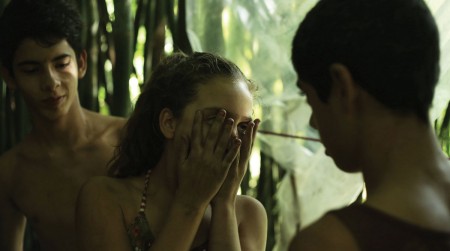
Tropical decadence
Compared, for good reason, to Lucrecia Martel - but the Latin Americans in general have a knack for decadent atmosphere - this debut film by the couple, Ulises Guardiola and Silvina Schnicer, delivers a heady, sensuous but surreal gabble of people and place. The scene is a boarded-up island family estate in the semi-tropical Argentinian Tigre Delta, a musty house revisited by three generations, there to decide whether or not to sell the property. Or, in the case of the young, to hang out, to flirt, and to play strange, menacing sexual-ish games. The roar and hum of developers, it it said, can be heard upriver. Unfortunately, as you can clearly tell in the first five minutes, there's going to be more mood than plot. This is a bit strange, because the issue of whether they must sell, and if they can do so advantageously, is such a clear-cut one. But the tropical heat makes people lazy, and obstreperous, and the wine flows, as well as the whisky.
As the family navigates their relationship to their home and local kids engage in forbidden games, various interpersonal conflicts that arise lead to a powerful crescendo that will make up for all the meandering: the filmmakers have admitted they have thrown together multiple stories, evidently with an aim to create a pleasing complexity, the mystery of the real, with resolution far from anybody's mind most of the way (which fits Martel's Zama rather well too).
I refer the reader to Jessica Kiang's Variety review from San Sebastián, an impressive effort in which she describes Tigre in lush and appreciative detail. The main thing is that the film sketches in the separate action of the matriarch and younger women, her quietly adversarial, covertly hostile son (he wants to sell the property, she insists it "non se vende," is not for sale), while the younger people meander around playing their jeux interdits. The frazzle-haired Rina (Marilú Marini) is sixtyish, but there's life in the dame yet. She tells her friend Elena (María Ucedo) about a recent mating she's staged in a motel, though it didn't go well, and she ditched the app, and lost or broke the phone, it's not clear which. The son is Facundo (Agustín Rittano), whom Kiang calls "middle-aged," though he doesn't look that old; no doubt he's still a player too. His and Rina's conversations are clear, but always at cross-purposes. Elena's daugher Sabrina (Magalí Fernández) is around, with best friend Meli (Ornella D’Elia) and the gawky but cute Estebán (Tomás Raimondi). As a contemporary note, some of the young people have tattoos and piercings. Here in the wilds, these play-tribal markings look more serious.
As Variety points out, a local boatman's preteen daughter is the center of attraction for a gaggle of smaller younger boys, whom she dominates "with primal 'Lord of the Flies'-style wildness." But of course Lord of the Flies is all boys, and this whole scene, old to young, has sex in the air. Also menace, as Estebán finds a cache of weapons that used to belong to Facundo, including a brace of hand-crafted spears and a big powerful sling that he hastens to use to down some poor bird. A feral-seeming boy from the village covets them. And one boy apparently is becoming paralyzed. The varied, meandering population wallows in sensuality, while some menacing practical boom waits to be lowered, a decisive step to be taken, as in a play by Tennessee Williams.
Some of this celebration of sensuality seems borderline implausible. If this house is so remote and boarded up, how did they got all this food and drink in, a whole goose, free-flowing wine, and how come everything, such as the fridge, works so well? But the filmmakers weave the increasingly menacing atmosphere so well, and the dp Ivan Gierasinchuk uses sweaty closeups with such vivid effectiveness, we rarely stop to question, merely holding our breath, as things get tenser and crazier, as the owls hoot and the crickets whir, for the inevitable violence, from whence it will come, we know not. (There is rarely music, mostly a satisfying wealth of ambient sound.) In the end, the mood and plot catch up with each other, and this accomplished first film justifies its meandering with its richness.
Tigre, 91 mins., debuted at Toronto Sept. 2017, also San Sebastián, Atlanta, Fribourg, Miami, East End and others, and screened for this review as part of the San Francisco International Film Festival, Apr. 2018.
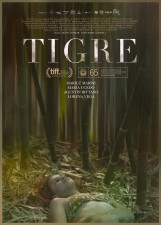
SHOWTIMES SFIFF:
Friday, April 13, 2018 at 8:30 p.m. at BAMPFA
Saturday, April 14, 2018 at 5:00 p.m. at Roxie Theater
Tuesday, April 17, 2018 at 1:30 p.m. at Victoria Theatre
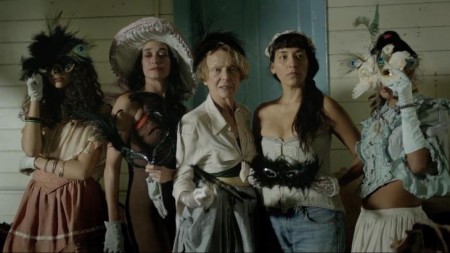
Last edited by Chris Knipp; 04-20-2018 at 12:33 AM.
-
THE WHITE GIRL (Jenny Suen, Christopher Doyle ( 2017)
JENNY SUEN, CHRISTOPHER DOYLE: THE WHITE GIRL (2017)
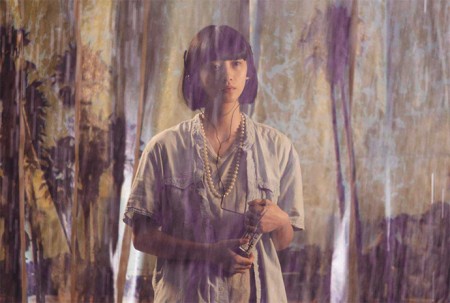
ANNGELA YUEN IN THE WHITE GIRL
Al allergy to vigorous filmmaking?
A girl who has always been told she is allergic to the rays of the sun.
"White Girl is a more focused and conventional film than Doyle’s Hong Kong Trilogy, which Suen produced, but it is still much more concerned with mood and vibe than crass plot points. Without doubt, we can see its aesthetic kinship with some of the classic Wong Kar-wai films he shot. It is a quiet, lulling film. . ." -J.B. Spins (Joe Bendel).
Lulling is right, as in putting to sleep. This is a misfire attempting to bring together misfits and present somewhat obvious allegories about Hong Kong, once a crowd of fishing villages, with its focus on a fishing village and a young woman who lonogs for her mother (the old UK connection, get it?). A young woman whose supposed sensitivity to sunlight keeps her sheltered except at night. One night she goes out and encounters a young Japanese man, Sakamoto (pop star Joe Odagiri) who is living in an abandoned historic tower "which houses a camera obscura that captures village life and projects it onto a decaying wall" (Screen Daily).
Also wandering round is a street kid called Ho Zai (Jeff Yiu) who sells mosquito coils with a singsong chant. He lives with a mute Buddhist monk with the hobby of fashioning Rube Goldberg devices. It is all shot in pale foggy blue. Those who think the visuals at times evoke Doye's cinematography for Wong Kar-wai in the great days of their Nineties collaborations are imagining things, though of course, Doyle is incapable of making uninteresting images. It's just the nonexistent, meandering story and terminally low-keyed quirkiness that are a bore. It is strange that Suen and Doyle returned to Hong Kong after both being long away only to produce such an anemic effort
Conversation with Jenny and Chris: click.
SFIFF SHOWTIMES:
Thursday, April 12, 2018 at 9:00 p.m. at Creativity Theater
Monday, April 16, 2018 at 6:15 p.m. at Victoria Theatre

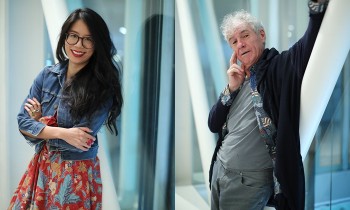
JENNY SUEN AND CHRISTOPHER DOYLE
Last edited by Chris Knipp; 04-17-2018 at 10:20 AM.
-
THE BIG BAD FOX & OTHER TALES ( Patrick Imbert, Benjamin Renner 2017)
PATRICK IMBERT, BENJAMIN RENNER: THE BIG BAD FOX & OTHER TALES/LE GRAND RENARD MÉCHANT & AUTRES CONTES (2017)
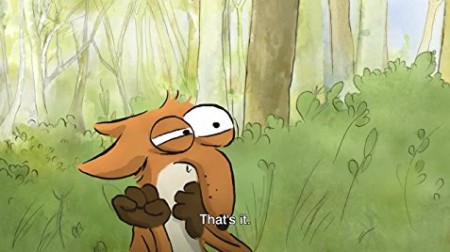
[CAPSULE REVIEW]
Whoever thinks that the countryside is calm and peaceful is mistaken. In it we find especially agitated animals, a Fox that thinks it's a chicken, a Rabbit that acts like a stork, and a Duck who wants to replace Father Christmas. If you want to take a vacation, keep driving past this place. French hand-drawn animated doesn't really bring anything too negative into the picture. It's notable for its lightheartedness and intentional simplicity.
The Big Bad Fox & Other Tales/Le grand renard méchant & autres contes, 83 mins., debuted as a work-in-progress at Annecy; about a dozen other international festivals, including the San Francisco International Film Festival, where it was screened for this review.
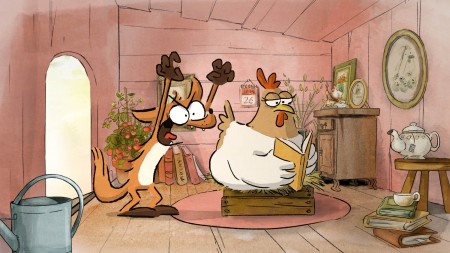
SHOWTIMES SFIFF:
Sunday, April 8, 2018 at 1:00 p.m. at Castro Theatre
Last edited by Chris Knipp; 04-16-2018 at 05:10 PM.
-
CITY OF THE SUN (Rati Oneli 2017)
RATI ONELI: CITY OF THE SUN/ბერლინი) (2017) მზის ქალაქი

A fading mining town in Georgia poetically examined
Oneli lived in New York for years, then came here to Georgia, made this cool, elegiac documentary, and has remained. The city of Chiatura once was a major supplier of the world's manganese; no more. It is a big empty shell. The film moves around with a cool eye following a few people. Much distinctive use is made by cinematographer Arseni Khachaturan of middle-distance and long-distance shots, and editing where camera position changes but continuity of sound and dialogue is never lost. This craftsmanship belies an editing style that shifts subjects with ironic randomness.
Some What do they do in the mine? How many buildings are empty, abandoned? men are still working in the mine. From a toast declared, they are still dying there. One miner performs in a local amateur theater. A music teacher, frustrated with his ten or twelve year old boys, performs songs for adults, and the rest of his time tears up a building to get the metal wiring that he sells to support himself. A phone call shows it keeps getting stolen. Two girls train as distance runners for the Olympics. They are promising athletes, but money needs to be raised to feed them: they are getting only one meal a day.
The camera observes these things, and dreary celebrations in partly abandoned buildings, with a distant, patient eye.
In one particularly fine shot the camera is twenty or thirty feet away from a large square window. Inside we see young girls at a party, dancing back and forth, perfectly framed. Sometimes the camera, still, simply observes a landscape, an overgrown mine hillside, or a crossroads in a sudden heavy rain. Or people traveling on what seems rickety public transport. It follows the music teacher to a former "Ministry of Communications" that is now just a shabby hall, where men and women, dressed up a bit, or the women anyway, joke, eat, drink and dance and get drunk, while he sings for them a song of his own composition, which they ignore. They say loud goodnights outside, and inside, the musician sits at the big table and consumes their leftovers. You can't make things like this up, and normally, you can't capture them on film.
See the discussion in Cinevue, and a live interview with Oneli (not as revealing as it might have been) in Fred. This film may feel stingy or disjointed to the casual viewer, but it contains the fruits of extraordinary patience and a distinctive vision. A dreamlike adventure in a nowhere wonderland of bygone mysteries. Stay around for the men drinking in an abandoned mine place by the golden light of an open fire toward the end clinking glasses to a "Grey world, grey century, grey town. Amen."
The title comes from an early utopian work by the Italian Dominican philosopher Tommaso Campanella, written in Italian in 1602, shortly after Campanella's imprisonment for heresy and sedition "A Poetical Dialogue between a Grandmaster of the Knights Hospitallers and a Genoese Sea-Captain, his guest." The closing end-quote it provides to the film is "They are rich because they want nothing, poor because they possess nothing, and consequently they are not slaves to circumstances, but circumstances serve them."
City of the Sun/მზის ქალაქი (Mzis kalaki), 104 mins., debuted at the Berlinale, and was shown in six other festivals, including the San Francisco International Film Festival, where it was screened for this review. There, it received Special Jury Mention, McBaine Documentary Feature. The jury granted this mention to Oneli’s film 'for its stunning use of cinematography and sound design that immerses us in a place that is at once stark and stirring."

Last edited by Chris Knipp; 04-16-2018 at 04:44 PM.
-
THE NEXT GUARDIAN (Arun Bhattarai, Dorottya Zurbó 2017)
ARUN BHATTARAI, DOROTTYA ZURBÓ: THE NEXT GUARDIAN (2017)
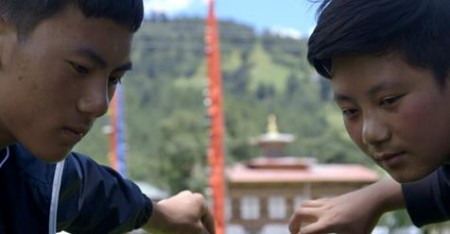
GEMTO AND TASHI SHARE A LAUGH IN THE NEXT GUARDIAN
Family misfits at a Buddhist monastery in Bhutan
The filmmaker pair closely follow their subjects for a while, then leave them with all up in the air. We meet the goofy dad, blessing people for money with a giant phallus and dancing clumsily with a mask. He runs a family inherited Tibetan Buddhist temple-monastery in Bhutan and he and his wife have two grown kids. We see them, Gyemto, the son, and Tashi, the daughter, joyously playing and training in soccer ball-handling. They gossip together about girls, which both are interested in, and they are on Facebook.
Dad wants Gyemto to attend monk training and take over the temple with more religious education than he had time to get, but he must finish studying in English school too; his mother sagely advises that people need English now, and he would need it to take foreign visitors around. We follow Tashi, who, as dad says, has long had "the soul of a boy," to girls soccer camp where she expects to get chosen for the national team.
Tashi does not get chosen. Dad takes Gyemto to the monastery where he wants him to train. It sounds grim. At this point, Gyemto stops talking to his father. And the father rattles on in a sort of singsong voice, with many gestures. No pressure, but if you don't do this, our patrimony will be taken away from us by the Buddhists or the government. But do what you want. No wonder Gyemto doses off that evening, as the drone goes on. But while he shuts down, he does not actively rebel and has told Tashi that if told to go to the monastery, he will do so.
Gyemto and Tashi still are best mates, still look at girls together. She begs him not to go to the monastery because then she will be alone. But at film's end, it's all up in the air.
This is another example of a documentary where the filmmakers have done a skillful job, mostly, of completely concealing that they are there, or hidden from us how much they may have influenced events. Congrats to everybody for not looking into the camera. But one feels a little cheated in more ways than one, though the scenery and settings are colorful and beautiful and the siblings are cute. Often documentaries fall into more or different things happening than they bargained for. This time less seems to happen than might have been expected. In a way this is novel and it takes a certain courage for the filmmakers to sit with it. But maybe they should have sat longer.
The Next Guardian, 85 mins., debuted at IDFA, also playing at Five Flavours, Budapest International Documentary Festival, True/False and the SFIFF, as part of which it was screened for this review.

GEYEMTO AND HIS FATHER IN THE NEXT GUARDIAN
Last edited by Chris Knipp; 04-17-2018 at 01:24 PM.
-
THE RESCUE LIST (Alyssa Fedele, Zachary Fink 2017)
ALYSSA FEDELE, ZACHARY FINK: THE RESCUE LIST (2017)
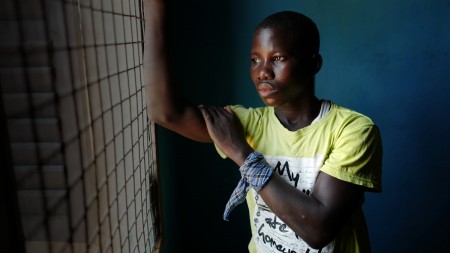
Slavery still exists
Slavery is alive and well and practiced in various forms and venues. Studied here and vividly depicted by the recently formed San Francisco anthropologist-filmmaker team of Fedele and Fink is what happens on Lake Volta in Ghana, the largest man-made lake in the world. Boys are sold by poor families to work on fishing boats here, presumably short-term. But they often seem to disappear, and regularly remain slaves to their fisherman masters for years.
First we meet Kwame, a former slave himself, who goes around on the lake, by boat or to remote villages, demanding that boys be given up. Surprisingly, Villagers and fisherman
do listen to reason. Then Kwame takes the boy to a secret rehabilitation center called Challenging Heights were they live for a year with other boys and go to school, which whether they are 14 or 18, may be for the first time. The center searches for their families, who have to swear they will never let them go again, on pain of jail.
We meet several newly rescued boys. Edem longs for his friend Teye to be rescued too and it happens. Peter was sold at age three and not rescued till he was 18. Steven is sad and can't function. Kwame takes him to the water for a healing ritual. He seems to feel survivor guilt for another boy who died diving to untangle the fishing nets in the murky waters, a common occurrence. We can see the damage and hurt in these boys, their estrangement from normal life and from education.But we also see beautiful smiles, fresh faces, and health. The boys seem to thrive at Challenging Heights. It's like an orphanage whose members arrive with an unusually unified background experience. They eat plenty of food, play sports, watch TV, and, most of all, attend the center's school classes where they learn reading and writing and English.
After the time is up we see a boy reintegrated with his family or, in one case, taken in by the village chief, who offers him the choice of that or living with his mother. He chooses the chief over his mother.
Rarely has a film been so moving, simple, hopeful, and sad. Kwame and Challenging Heights are credited with rescuing 1,000 boys, but it's believed that 10,000 are currently slaves on the lake. It is a miserable life. They are beaten, worked and given no respite, and may drown.
The Rescue List 78 mins., debuted at the San Francisco International Film Festival, where it was screened online for this review. Also in the Full Frame, DocLands film festivals. See review by Dennis Harvey at San Francisco for Variety.
Last edited by Chris Knipp; 04-16-2018 at 09:17 PM.
 Posting Permissions
Posting Permissions
- You may not post new threads
- You may not post replies
- You may not post attachments
- You may not edit your posts
-
Forum Rules





 Reply With Quote
Reply With Quote














Bookmarks